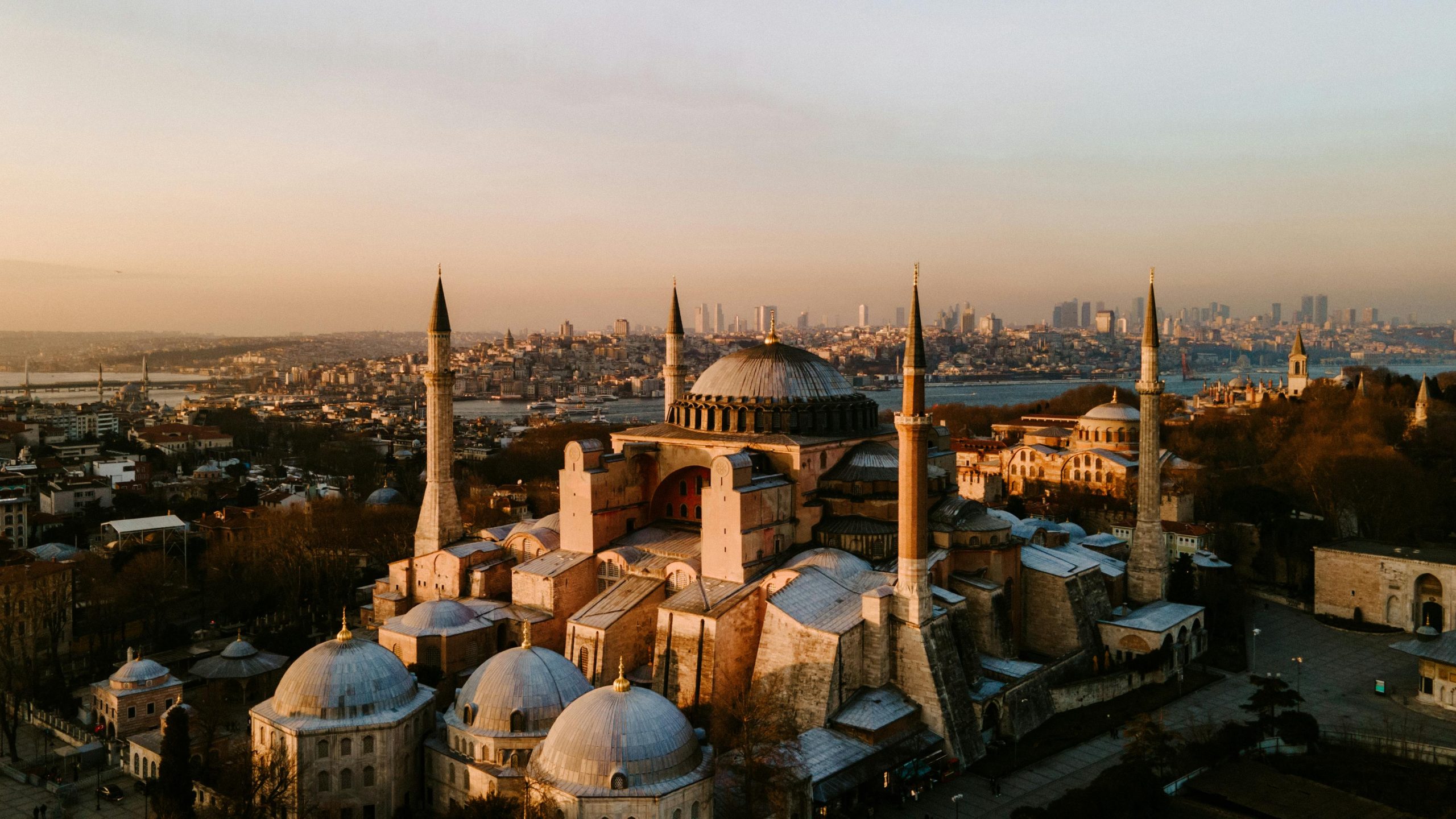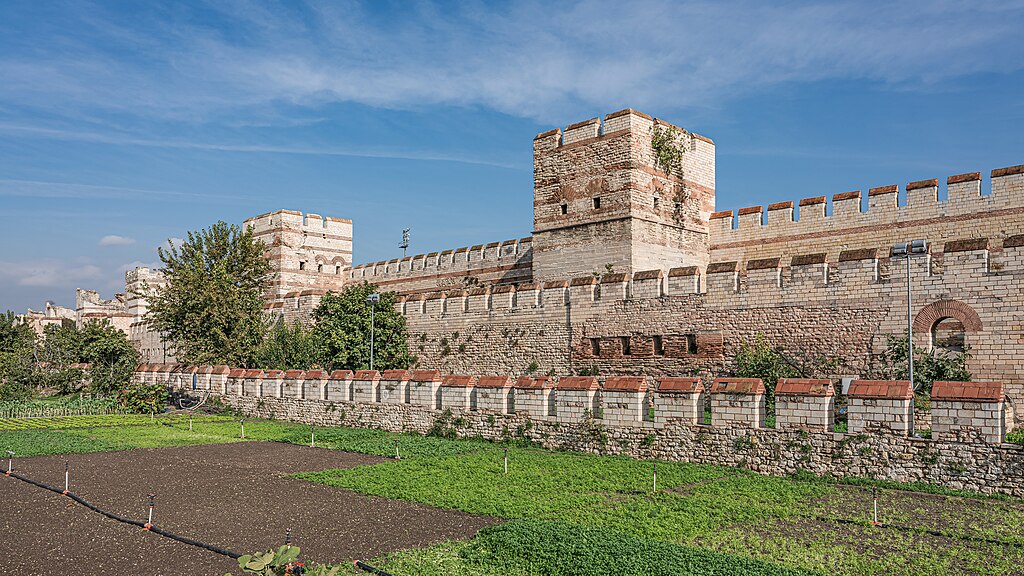Fifth Military Gate, Istanbul
City Gate in Istanbul

The Fifth Military Gate, known in Turkish as Hücum Kapısı (“Assault Gate”), marks the precise spot where the impossible happened — the moment when the once-impregnable Theodosian Walls were finally breached. Located just north of the Lycus stream, between towers 77 and 78, this was where Ottoman troops poured into Constantinople on the morning of May 29, 1453, sealing the fate of the Byzantine Empire. For history lovers, this is one of the must-see places in Istanbul, where centuries of empire, faith, and legend culminated in a single morning of thunder, smoke, and steel.
Named after the ancient district of Pempton (“the Fifth”), the gate was part of a network of smaller, strategically placed openings in the city's great defensive system. While the gate itself has vanished, the surrounding landscape and damaged masonry bear witness to its dramatic role in history. Today, standing here feels like standing at the hinge of world history — where medieval Byzantium ended and the Ottoman age began. The Hücum Kapısı is also a highlight of any walking tour of Istanbul's Theodosian Walls, as it encapsulates both the grandeur and fragility of empires.
History and Significance of the Fifth Military Gate (Hücum Kapısı)
The Fifth Military Gate formed part of the central section of the Theodosian Walls, the massive 5th-century fortifications built under Emperor Theodosius II. These walls protected Constantinople for more than a thousand years, withstanding countless sieges that cemented their reputation as the strongest city defenses in the medieval world. The gate took its name from the nearby Pempton quarter, meaning “the Fifth,” possibly referencing a military division or district boundary.
However, its true fame — or infamy — comes from its role during the Fall of Constantinople in 1453. Ottoman Sultan Mehmed II's massive army, numbering over 80,000 men, bombarded the walls for weeks with cannons, including the colossal “Basilic.” While much of the assault was concentrated near the Gate of Saint Romanus, the final breakthrough came slightly north, here at the Fifth Military Gate. Ottoman forces led by Janissaries forced their way through breaches in the weakened masonry. Some historians believe that Emperor Constantine XI Palaiologos fell fighting in this very area, making it one of the most symbolically charged locations in Istanbul.
Extensive late Byzantine and Ottoman repairs are visible along this section of the wall, suggesting the desperate patching that took place before and after the final siege. Despite the gate's physical absence today, the site remains sacred ground for those fascinated by the city's transformative history.
Things to See and Do at the Fifth Military Gate (Hücum Kapısı)
While no gate structure remains, the site's appeal lies in its haunting atmosphere and historical resonance. Visitors can stand before the battered stretch of wall between towers 77 and 78 — the point where the Theodosian line was breached for the first time in a millennium. The rough brickwork and masonry repairs here reveal layers of Byzantine and Ottoman history intertwined.
Informational plaques nearby recount the events of 1453, and the surrounding terrain still bears the shape of the old Lycus valley where armies clashed. For those walking the Theodosian Walls, this section offers an emotionally powerful stop — quiet, unassuming, yet momentous. It's also one of the best photography spots along the walls, especially in the late afternoon light when the centuries-old stones glow with golden hues.
How to Get There
The Fifth Military Gate (Hücum Kapısı) is located near the modern neighborhood of Topkapı, within the Fatih district of Istanbul, just north of the old Lycus stream bed. The nearest Marmaray station is Kazlıçeşme, around a 25-minute walk away. You can use the official TCDD Taşımacılık website to check schedules, compare routes, and purchase tickets for Turkey's national and regional trains operated by TCDD. For a more streamlined experience (especially if you prefer an English interface or want to compare across countries), we recommend using Omio, which allows you to easily compare prices, schedules, and book train tickets across Turkey and the rest of Europe — all in one place. For those driving, limited parking can be found along Turgut Özal Millet Caddesi or near the Panorama 1453 History Museum. If you are looking to rent a car in Turkey I recommend having a look at Discover Cars, first, as they compare prices and review multiple car rental agencies for you. The site is also accessible by tram or bus, with stops labeled “Topkapı” nearby.
Practical Tips on Visiting the Fifth Military Gate (Hücum Kapısı)
- Best time to visit the Fifth Military Gate: Morning or late afternoon for quiet reflection and good lighting.
- Entrance fee in Euros: Free.
- Opening hours: Accessible at all times.
- Official website: Not applicable.
- How long to spend: 20–30 minutes.
- Accessibility: Some uneven ground; wear sturdy shoes for wall walks.
- Facilities: Minimal; water and restrooms available at nearby Panorama 1453 Museum.
- Photography tip: Capture the sloping terrain and damaged wall sections for a sense of scale.
- Guided tours: Featured in Byzantine-Ottoman history tours and wall expeditions.
- Nearby food options: Street cafés and eateries near the Topkapı tram station.
Is the Fifth Military Gate (Hücum Kapısı) worth visiting?
Yes. The Fifth Military Gate is one of the top sights in Istanbul for anyone passionate about history, warfare, or the legacy of Constantinople. While the physical gate may be gone, the ground itself tells a story of endurance and transformation. Standing here, you're not just visiting ruins — you're standing where world history turned a page.
FAQs for Visiting the Fifth Military Gate (Hücum Kapısı)
Why is it called Hücum Kapısı?
In Turkish, “Hücum Kapısı” means “Assault Gate,” referring to the site of the Ottoman breakthrough in 1453.
Was this where Emperor Constantine XI died?
Many historians believe the Byzantine emperor perished near this location during the final Ottoman assault.
Is the original gate still visible?
No, the gate itself has disappeared, but the section of wall and towers 77 and 78 mark the exact area.
Can visitors access the wall?
Some parts can be climbed carefully, though others are restricted for safety.
Is the site easy to find?
Yes, it lies along the Theodosian Walls just north of the Topkapı area, with historical signage nearby.
Nearby Attractions to the Fifth Military Gate (Hücum Kapısı)
- Gate of Saint Romanus (Topkapı) – The command post of Emperor Constantine XI during the siege.
- Panorama 1453 History Museum – An immersive museum depicting the Ottoman conquest in vivid 3D detail.
- Theodosian Walls – The city's ancient defensive system, stretching over 6 km.
- Yedikule Fortress – A massive Ottoman fort incorporating parts of the old Byzantine walls.
- Mihrimah Sultan Mosque – A 16th-century Ottoman mosque near Edirnekapı with panoramic views.
The Fifth Military Gate appears in our Complete Guide to Visiting Istanbul!
This website uses affiliate links which may earn a commission at no additional cost to you!
Visiting Fifth Military Gate
Nearby Attractions
- Gate of Saint Romanus (0.4) km
City Gate in Istanbul - Panorama 1453 History Museum (0.9) km
Museum in Istanbul - Gate of Rhesios (1.1) km
City Gate in Istanbul - Gate of Charisius (1.3) km
City Gate in Istanbul - Chora Church (1.3) km
Church in Istanbul - Palace of the Porphyrogenitus (1.6) km
Palace in Istanbul - Palace of Blachernae (1.6) km
Palace and Roman Site in Istanbul - Kaligaria Gate (1.7) km
City Gate in Istanbul - Gate of the Spring (2.0) km
City Gate in Istanbul - Xylokerkos Gate (2.7) km
City Gate in Istanbul


